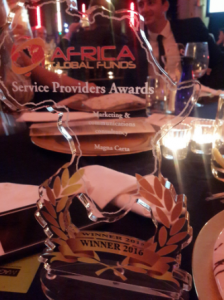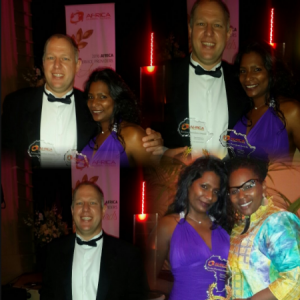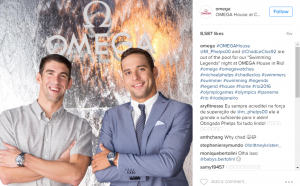All posts by Tiisetso Gama
Magna Carta launches the Africa Reputation Index: Unpacking key drivers of reputation in Africa
Managing the metrics that drive reputation is vital to business sustainability in Africa, finds inaugural Magna Carta Africa Reputation Index
- Good governance is the top reputational attribute for telecommunications companies in South Africa
- Consumers want to see improved working conditions for government employees to reduce the frustration factor
- Banks should distinguish themselves more in terms of their customer service offering
Johannesburg; 15 March 2017: Reputational drivers and attributes vary markedly across key industries in South Africa, highlighting the crucial need for executives to harness effective reputation management strategies to improve their understanding of consumer behaviour and chances of success when a crisis strikes.
Among the key findings of Magna Carta Reputation Management Consultant’s inaugural Africa Reputation Index (ARI) are that good governance is the top reputational attribute for telecommunications companies in South Africa, while consumers want to see improved working conditions for government employees. Banks, meanwhile, should distinguish themselves more in terms of their customer service offering. In food retail services people really want exceptional customer service, while with cars quality stands out as the most important reputational attribute.
“Detailed sectoral and comparative analysis is needed to enable companies to plan ahead of a crisis to improve outcomes and protect and enhance profits. If the impact of reputation is not well enough understood growth prospects will suffer,” says Katherine du Plessis, data analyst at Magna Carta.
Magna Carta’s Index, which was undertaken in collaboration with leading marketing strategy consultancy, Yellowwood, enables high-level planning to limit reputational damage and provide companies in Africa with the tools needed to create an effective reputational management strategy that is a vital component of business sustainability.
The index ranks companies in five separate industries – car manufacturers, food retailers, financial services, public services and telecommunications companies – in terms of their key reputational drivers. Each company received a reputation score out of 100. 1,306 South African consumers were surveyed.
The index shows that in the telecommunications and motor vehicle sectors, word of mouth is the most important driver of reputation.
“In telecommunications, recommendation is essential because people have such an affinity to their mobile devices; whereas with cars it is because of the pride that flows from choosing and paying for a desired and expensive asset. For both cell phones and cars, people aspire to make a choice that reflects their personal identity,” explains Du Plessis.
What stands out in the public sector is that a good working environment is seen as a key differentiator – this indicator shows that consumers want a clean, more efficient and pleasant experience.
“Frustration increases when dealing with government is a negative experience, or when strikes halt delivery of much-needed services. The counter to this is to improve internal working conditions by creating an environment which improves staff morale and happiness, as this will then filter through to service delivery and improved experiences,” says Du Plessis.
The survey finds that with vehicles, quality is most important reputational attribute followed by customer service. This is because consumers are likely to spend a lot of time selecting the right car to invest in and interaction with salespeople will be minimal and infrequent.
“It is unlikely a consumer will select a new car based solely on service, especially when a new, high quality vehicle resonates with his or her personal image or they have spent a lot of time researching the best car they can afford”, says Du Plessis.
In food retail services, which is known for visibility, people really want exceptional customer service.
“People in SA are used to shopping where it is convenient, but food stores are complacent in not driving customer service. If they were to differentiate themselves in their service offering, customers will travel further resulting in more business,” she says.
The top financial service providers are recognised for customer service, but they do not necessarily stand out from each other on their service offering.
“Customer service is the top reputational attribute, particularly being available and responsive to client needs, but not one bank stands out. The second most important attribute is integrity, an area where banks have experienced some reputational damage in the past year,” says Du Plessis.
Another important finding is that corporate social investment (CSI) had the lowest ranking out of the reputational attributes across all industries. This is not to say that CSI is unimportant, but other attributes have more weight with regard to corporate reputation.
“The ranking of reputational drivers seems to follow reputation crises in various industries. For example, governance in telecommunications follows recent high-profile scandals in the sector. All measured attributes are important and so it follows that if a sector messes up on something like CSI in the future, you would probably find CSI jumping to the top of the queue as an industry reputational driver,” says Du Plessis.
The bottom line is that reputational risk is on the rise.
“It is clear that in the digital age of rapid information flow and consumption, effective crisis management is quickly emerging as a vital component of business sustainability. The best of breed in measurement and analytics is needed to ensure reputation plays an ever increasing role in corporate strategy and ultimately benefits, rather than damages, the bottom line,” says Sechaba Motsieloa, newly appointed CEO of Magna Carta Reputation Management Consultants.
Magna Carta aims to expand the index to other sectors within South Africa and into other African countries.
ENDS//
Notes to Editor
About the African Reputation Index
Magna Carta Reputation Management Consultants and Yellowwood, a leading marketing strategy consultancy, hosted focus groups with South Africans from a variety of backgrounds, and conducted in-depth interviews with industry influencers – including journalists, economists and senior managers Data was collated using a robust research study from a sample of 1 304 South Africans. Respondents were asked to select an industry, identify different companies in the industry, and then rate the companies on a series of 44 reputational drivers that had been identified from the focus groups and in-depth Interviews.
What’s the big deal about big data?
Using data insights to make informed decisions about your business continues to play a big role in the future of our industry.
So what is the big deal about big data? Magna’s data analyst, @katduplessis, weighs in on it via this article in the Mail and Guardian. Click on the link to read the article below:
The Big Lesson from 2016 – Enterprise Internet Reputation Management is Vital
Digital is driving business and is vital for any enterprise’s growth but it has created big reputational pitfalls as seen during 2016. We all know that digital allows enterprises to engage directly with their customers, provides new marketing channels and also allows customers to let you know about their problems, but and there is a BIG BUT!
The challenge is that now we want direct access to company executives and expect them to not only be online, but responsive and engaging. The pitfalls that we have seen this year from executives include expressing damaging opinions in the heat of the moment, or without context (which cannot be expressed in 140 characters).
This is why internet reputation management is a must for every business organisation. The tracking of public opinion, analysing of these, and finally interpreting meaningful information out of it can be used to build your reputation management strategy.
Social profiler training is also vital in that it prepares C-suite executives to enter the digital world and understand that everything posted on the internet lives forever – deleting a tweet doesn’t mean someone hasn’t screen grabbed it.
Internet reputation management includes the creation and implementation of social media policies as well as social media crisis communications strategies.
We at Magna Carta leverage the powerful role that reputation management and PR play in the marketing mix, through our social media profiler for C-suite executives, media training for business leaders and spokespeople and full reputation management services and crisis communication workshops. Don’t wait until you or your enterprises is in need of crisis communication, contact us today to keep your reputation intact.
For more info contact: Kalay Maistry, Business Unit Head
Digital and Strategic Advisory services
Magna Carta wins Best marketing & communications consultancy in AGF Service Providers Awards
Magna Carta has just been named Best marketing & communications consultancy 2016 by the Africa Global Fund Service Providers Awards. With 29 categories all in all, we’re proud to have gone up against great agencies, like Cambial Communications and Frontier Funds, in this category.
Business Unit Head Moliehi Molekoa and Senior Account Director Lee Stokes flew down from our Johannesburg office to attend the awards at Rotunda Bay Hotel.
We would like to thank Africa Global Fund for this prestigious award, and most importantly our entire Magna Carta staff for continuously delivering great work and going above and beyond what is required.
Tiisetso Gama, Internal Communications
PR Takes The Helm Of Content Creation
Magna’s Senior Account Director Ima Peter @JHBPRGirl , and Social Media and Content Marketing Director Anne Dolinschek @AnneDoli, wrote a thought leadership piece for the Social Media Landscape Report 2017. Click on the link to read the article below:
The Sponsors Who Captured the Most Social Engagement during Rio 2016
With any major sporting event, we know that brands will fight not only to sponsor the world’s greatest athletes, but to push their international marketing efforts, especially using social and digital media. This year’s Olympic and Paralympic Games, hosted in Brazil’s Rio de Janeiro, were no different as sponsors jostled to capture the most social engagement.
The Rio Olympics received official sponsorships from the world’s biggest brands – Samsung, Coca-Cola, McDonald’s – giving us a front row seat to watch innovative marketing campaigns unfold, and causing this year’s Game’s to be declared the most social ever. Ratings on traditional media channels, such as TV, continue to drop; thus social media was the perfect platform to connect with fans and athletes alike. Platforms used included Facebook, Twitter, Instagram and Snapchat, which helped the brands solidify their presence and reach with round-the-clock coverage, while talking to their customers directly where they are.
“That includes behind-the-scenes access, Facebook Live interviews, social media takeovers by athletes, real-time score updates, tune-in streaming info, social polls, articles, videos and photo galleries from NBCOlympics.com.”- adweek.com
While Facebook was the main social platform used to share official content, Instagram came out on top when it came to engagement.
Samsung’s #DoWhatYouCant campaign mini-series “highlights personal battles of sacrifice, illness and never giving up”. However, what landed them on the top spot is their ‘connections without borders’ mantra that showcased their Galaxy S7 Edge. They achieved global interest and recognition through emotive and motivational ads, namely “The Chant” and “The Anthem”. The Chant features South Sudan’s first ever Olympic team member, athlete Margret Rumat Rumat Hassan. The Anthem combines the world’s national anthems into one song, showing how we only have geographical barriers that can be broken if we unify and connect.
Timepiece brand Omega won overall engagement on Instagram with their hashtag #recordingdreams, a ‘movement’ supported by brand ambassadors Michael Phelps, Chad Le Clos, Jessica Ennis-Hill and Sergio Garcia. They achieved this through rich imagery, influencer marketing, and relevant and timely content, although Samsung had the most engaging posts on Instagram.
However, some brands that weren’t official sponsors still managed to break through: National Lottery sponsored Team Great Britain, who boasted a record-breaking result as they won more medals this year than the Olympics they hosted. @TeamGB saw over 100 000 new followers and players’ paid tribute to the continued support and sponsorship from the brand that afforded the athletes the opportunity to train, compete and excel.
Under Armour, an American sports clothing and accessories company, got everyone talking as USA’s gymnastics team and new star of Team USA Simone Biles performed their routines in their apparel; while the Michael Phelps video that was part of the Rule Yourself campaign created a social stir.
One thing that is clear is that brands need to capitalise on social media and new digital streams in order to make an impact, whether they are sponsors or not. And just for good measure, although not on our list, we have to share this brilliant Nike ad that features our golden girl Caster Semenya, who came home with a gold medal for her world-class performance in the women’s 1 500m race.
Tiisetso Gama, Internal Communications Manager
[Newsmaker] Sechaba Motsieloa from Magna Carta
The Craft of Visual Storytelling
As a PR professional, I often find myself in a lot of meetings where the term ‘storytelling’ is thrown around by the advertising agency, digital agency and, of course, by us, the PR agency.
So, what’s all the fuss about, and is this just the next short-lived marketing fad or something more sustainable?
My gut tells me branded content and visual storytelling is here to stay, here are a few reasons why I believe this to be true:
Images win over text

Text can be complex, pictures, by contrast, are simple.
Every day, we face a flood of messages and information for which we have little time to process. Text takes time to read and comprehend, but pictures function quickly, breaking through to consumers to grab their attention.
The world is global, and so our communication needs to work globally. Text must be translated, while images effortlessly tell a story across cultures and languages.
Storytelling toolbox delivers
We now have a number of tools to help us craft visual stories: The infographic is already considered ‘so yesterday’; multimedia and video continue to gain popularity; and gifs are on the rise along with cinematography, not to mention the growing use of virtual and augmented reality.
All of these are aimed at grabbing our attention, decorating the story, entertaining, inspiring and motivating, and forcing us to visualise.
The new grammar of storytelling includes colour, focus, style, contrast, frames, and perspective.
We all see the value
The rise of Netflix has recently taken branded content to a new level; communicators have realised that to advertise effectively, to peak attention and interest, they have to break out of old habits and set new, compelling standards for branded content and video advertising.
A great example is Farmland, a documentary sponsored by major U.S. agricultural companies that offers an absorbing first-hand look into the lives of six farmers.
While sponsoring content may not seem particularly game changing, it’s Netflix’s market dominance combined with a willingness to test new advertising methods that’s changing the game for the better.
None of this is particularly surprising to us, right? Right, but finding, sourcing, licensing, publishing and sharing images that tell a story isn’t as easy as it sounds. Fortunately, now is the time to ride the tide of a visual tsunami to get our clients to see the value of visual storytelling .
Tanya Buckley
Head of Content


